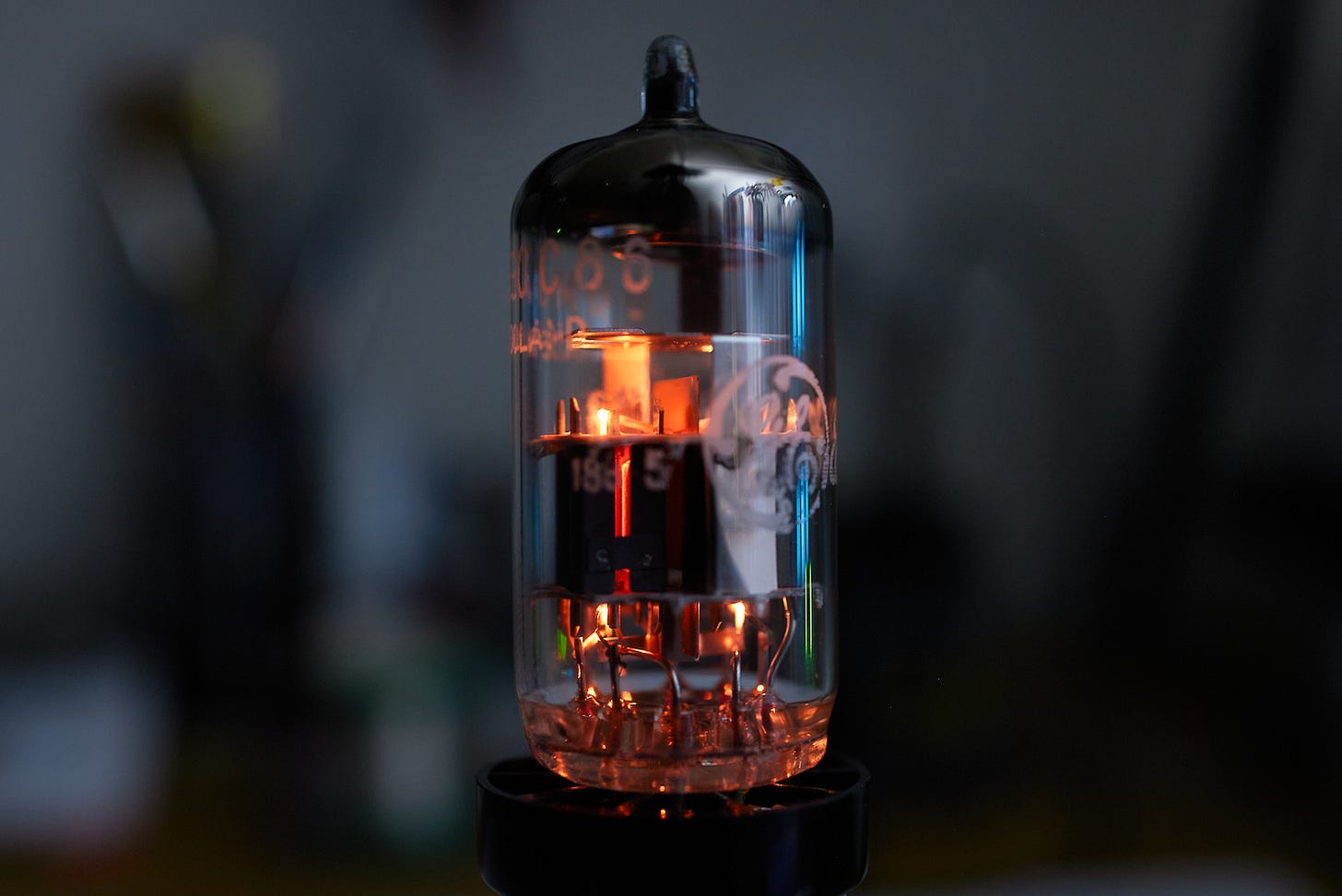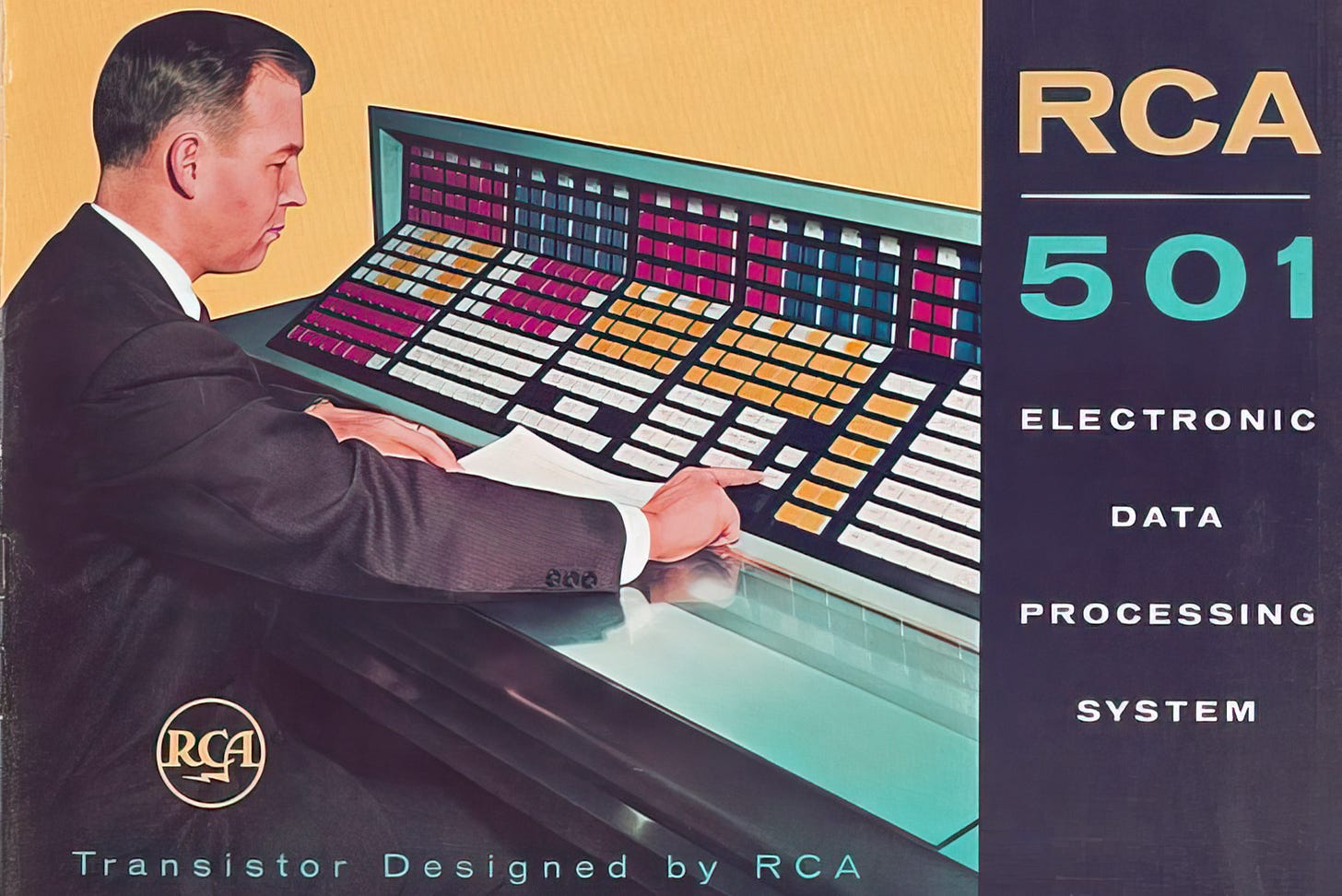Who killed the vacuum tube?
The tubes are gone, but it wasn't about their performance -- and probably not even about the size.
The collapse of the Soviet Union brought profound socioeconomic change to the Eastern Bloc. One of my vivid memories involves catching up on decades of technological progress in a span of months. All of sudden, every family in Poland could covet hitherto unheard-of wonders: a toaster, a Walkman, a PC, or a VCR.
Because the past held nothing but misery, we seldom looked back — and when I started fiddling with electronics in my early teens, I applied the same rule. Surely, there wasn’t anything noteworthy about vacuum tubes; the transistor must’ve been axiomatically better in every single way.
Today, I know that the history of vacuum tubes holds interesting lessons — not only about circuit design, but about how having a superior product isn’t enough to stay afloat.
But first things first: in 2022, the operating principles of vacuum tubes are esoteric knowledge. It follows that we should probably start with some theory.
The simplest vacuum tube — a diode — consists of two metal electrodes separated by high vacuum. Normally, this wouldn’t permit any electrical current to flow — not without the application of an extremely strong electric field to strip electrons off the cathode and drag them through the gap.
But in the late 1800s, several folks observed an interesting phenomenon: if you took a negatively-charged piece of metal and heated it to a glow, it lost its charge. The energy provided through heating was evidently enough for some excited electrons to be ejected and drift away in response to weak electric fields. Placing a room-temperature, positively-charged electrode nearby pulled electrons in that direction and caused a small current to flow.
A simple tube with a heated electrode works as a rectifier, because electrons can only travel from the heated cathode to the room-temperature anode, and not the other way round. But a more exciting variant — a triode — can be constructed by placing a grid-shaped element in between. If a small negative charge is applied to the grid, it effectively cancels out the stronger electric field emanating from the more distant anode, discouraging cathode electrons from jumping ship. As the grid voltage is increased, the pilgrimage of electrons can resume.
Some electrons might hit the grid, too, but the element has a small cross-section and is usually kept at a voltage lower or similar than that of the cathode. Under these circumstances, the grid current is virtually zero, making the tube a voltage-controlled amplifier — simpler to use and more sensitive than bipolar junction transistors (BJTs) of its day.
To understand the behavior of a vacuum tube, I put together this experimental plot. The horizontal axis shows the voltage applied to the control grid, while the vertical axis illustrates the current flowing between the cathode and the anode:
There are several things to note. First, the tube displays remarkable linearity throughout a good portion of its operating range, especially around zero volts. This is perfect for amplifying small signals — and something most transistors can’t do. A typical BJT does nothing until around 0.6V is applied to its control terminal; a MOSFET may require 2V to wake up. Transistors also exhibit a steep and unpredictable response curve, changing with the temperature and varying from batch to batch. To purists, this is a cardinal sin. Practitioners shrug and clobber together a dozen solid-state components to add negative feedback and compensate for thermal drift.
Another interesting detail is that I plotted the curves at low anode voltages: 6V, 12V, and 25V. This is a far cry from the hundreds of volts normally associated with vacuum tubes. As it turns out, most tubes are perfectly capable of operating in this range; if one wanted to build a vacuum tube calculator today, there would be no reason to make it a lethal hazard to tinker with.
When tube circuits use higher voltages, it’s usually to deliver more power to the controlled device — perhaps to a hi-fi speaker or the antenna of a ham radio rig. The issue is that vacuum tubes have a relatively high “on” resistance due to the inherent inefficiency of thermionic emission; in my example, the tube admits roughly 25 mA at 25 V, implying a resistance of about 1 kΩ. To increase the power (voltage × current) delivered downstream, you had to crank up the volts.
There is one more thing going on in that plot: especially for the 6V curve, there appears to be a breakdown in linearity as the grid approaches +1V. This is the caveat alluded to earlier on: the tube is a pure voltage-controlled device only as long as the grid stays below or around the voltage of the cathode. Past that point, some electrons will be attracted to the grid itself — more so at lower tube voltages, when the pull of the anode isn’t as strong. To illustrate, let’s repeat the earlier measurement, now looking at this unwanted grid current alone:
Still, solid-state semiconductors are worse! In the end, the demise of vacuum tubes had nothing to do with the superior electrical characteristics of discrete transistors. It wasn’t even about the size: the nuvistor tube certainly held its own. For the most part, it boiled down to lower cost and better power efficiency. Even the smallest tubes needed around 600 mW to heat the cathode. The transistor ushered in the era of portable electronics and computers that didn’t need their own power plants.
The tube excelled at things that appealed to nerds, but came short on what mattered to the industry. And as it turned out, the nerdy stuff wasn’t important — or could be compensated for with ease.
Of course, the final nail to the coffin was the Fairchild planar process that packed transistors by the thousands, millions, and then by the billions on a single die. But the fate of the vacuum tube has been sealed long before that.
I write well-researched, original articles about geek culture, electronic circuit design, and more. If you like the content, please subscribe. It’s increasingly difficult to stay in touch with readers via social media; my typical post on X is shown to less than 5% of my followers and gets a ~0.2% clickthrough rate.






